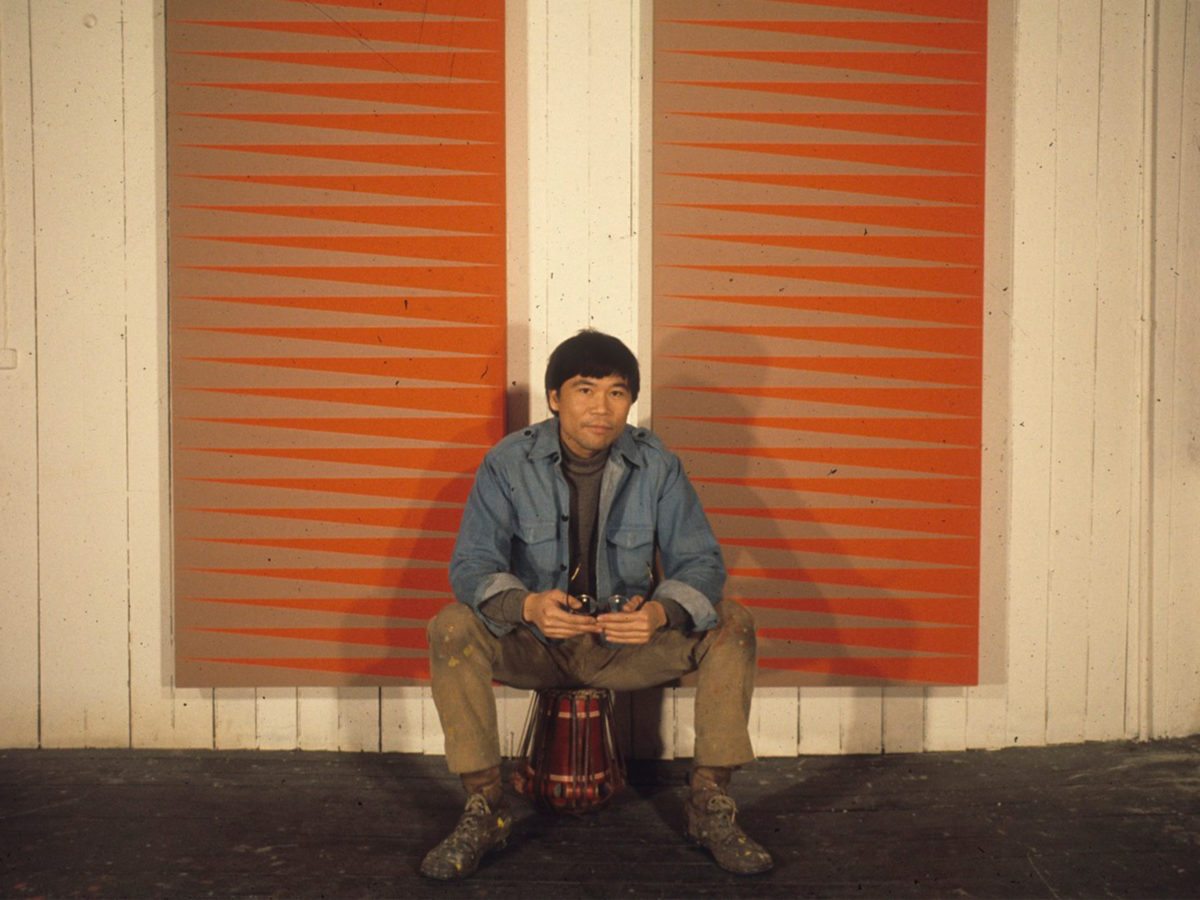Activity
Putting Together the Puzzle: Leo Valledor’s Shaped Canvases
Objective: To understand Leo Valledor's choices behind his shaped canvas paintings.

Common Core State Standards
K.VA:Cr1.1. Engage in exploration and imaginative play with various arts materials.
1.VA:Cr2.1. Explore uses of materials and tools to create works of art or design.
2.VA:Cr3. Discuss and reflect with peers about choices made in creating artwork.
3.VA:Re7.1. Speculate about processes an artist uses to create a work of art.
4.VA:Re7.1. Compare responses to a work of art before and after working in similar media.
Materials
- White construction paper (the larger the better)
- Colored construction paper (at least three different colors)
- Coloring implements (pencils, pens, or crayons)
- Scissors
- Ruler
- Protractor
- Optional for grades K–5: geometric magnetic tiles
- Optional for grades 6 and above: math compass
Procedure
Directions to give to the students (either orally or on paper):
Along with changing the shape of the canvas, Leo Valledor also used color to play with the spaces within and around each canvas. As he said in an interview with David Bourdan, “I was interested in each part [of a painting] as a jigsaw puzzle” (Bourdan 2012, 21). Let’s explore the decisions that might have gone into creating his puzzle-like artworks.
Part I
- Choose one of Valledor paintings provided in teacher packet or research another painting here.
- Re-create: Using one piece of color paper for each shape, re-create the painting by cutting the pieces of paper to match the shapes.
- Exhibit: Lay out your folded pieces in the same positions as in Valledor’s original.
- Compare: Rearrange the shapes you created in new positions.
- Consider: (Older students can journal-write on these questions.)
a. Does your reorganized “painting” feel different than Valledor’s original piece? If it does, why might that be? Might it have to do with the arrangement of colors or the placement of shapes, or both?
b. How does the background, the negative space, change?
c. Are there configurations of the shapes you like better than how Valledor placed them? If so, why do you like these “paintings” better?
Part II
- On a piece of white construction paper, use the ruler and protractor (and optional math compass) to create the outline for a unique shape that takes up most of the space on the paper.
- Cut this shape out and discard the extra scraps of construction paper.
- Place your cut-out on your table and think about the smaller geometrical shapes you can create within this “shaped canvas.” (Optional: Younger students can use geometric magnetic tiles to arrange shapes on their canvas.)
- Draw your chosen smaller shapes on your canvas, again using the ruler and protractor (and optional math compass).
- Color each geometrical shape a different color.
- Reflect: When you’ve finished, consider how the shape of the canvas affected your creation process: did you feel limited or inspired in creating your “painting”? Why?
- Discuss: Now that you’ve made some of the same kinds of decisions that Valledor had to make to create his paintings, share:
a. What factors helped you to make those decisions? What mattered most to you, when choosing how to shape your canvas and where to place certain colors and lines?
b. What do you now understand about how Valledor put his puzzle-like paintings together?
Possible Extension for Grades K–5
- Identify the different colors and shapes you see in Valledor’s paintings. Some of the shapes are regular (circle, square, triangle, etc.), while others are irregular. What words could you use to describe the irregular shapes?
Possible Extensions for Grades 6 and above:
- Choose a Valledor painting and write a paper analyzing how he used the shaped canvas and the placement of color and lines to create a certain effect.
- Watch this discussion of how the David Richard Gallery in New York decided to hang Valledor’s The Impossible Dream (from 19:10-21:45 in this video). The gallery’s placement of the canvases is different from the one depicted in the image above. Why did they make this decision? How does their installation change your experience of the painting? The video also shows just how large Valledor’s paintings are — how does seeing their size relative to the speakers affect your understanding of these paintings?
- Create a project with your math class that examines the geometry in Valledor’s art. How might you break down his paintings into their geometric components (lines, shapes, angles, arcs, points, dimension, etc.)? Does understanding the math in his paintings deepen or diminish your appreciation of his work?
Download the teacher packet from sidebar above for complete instructions.
For more lessons based on Leo Valledor, visit the artist’s teacher packet.




